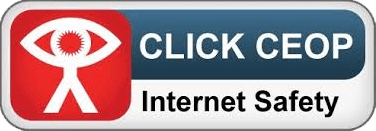Violet Classes (Y5 & Y6)
Welcome to Violet Classes, Years 5 and 6.
Year 5, Violet 1: Miss Lawson
Year 6, Violet 3: Miss Ward
Year 5 are lucky to have Mrs Crossey as Teaching and Learning Assistant.
Year 6 are lucky to have Mrs Procaccini, and Mr Anthony as Teaching and Learning Support Assistants
We have lots to look forward to this year in all areas of our learning, so please look at our curriculum maps for further information about the topics we will cover in all our different subjects.
There are five things you need to know about the Violet Classes:
1. We are enthusiastic in all we do.
2. We always try our best and are very hard-working.
3. We are good team players and always show good sportsmanship.
4. Our presentation is always beautiful.
5. We are good friends and always work together, living out our School Mission Statement.
As you can see, we really stand by the St Joseph’s mission statement in all we do. We hope that the information on our page will help you share our learning with us.
Violet 1 Curriculu,m Meeting Presentation
Violet 3 Timetable 2023 /2024
Y6 Curriculum Meeting Presentation 2023
Year 5 Curriculum Plan 2023
Year 6 Curriculum Plan 2023
Year 5 & 6 Key English Vocabulary
Year 5 & 6 Key Mathematics Vocabulary
Year 5 & 6 Key Religious Education Vocabulary
Year 5 & 6 Key Science Vocabulary
Year 5 & 6 Useful Websites
Year 5 & 6 Recommended Texts
Equipment List Year 5 & 6
Key Stage 2 Curriculum
Art and Design Aims
The National Curriculum for art and design aims to ensure that all pupils:
- produce creative work, exploring their ideas and recording their experiences
- become proficient in using drawing, painting, sculpture and other creative expressions
- evaluate and analyse artistic works using the language of art, craft and design
- know about the great artists, craftsmen and designers, and understand the historical development of their art forms.
Subject Content Key Stage 2
Pupils should be taught to develop their techniques, including their control and their use of materials, with experimentation and an increasing awareness of different kinds of art, craft and design.
Pupils should be taught:
- to create sketch books to record their observations and use them to review and revisit ideas, and collect visual material to help them to develop their ideas
- to improve their mastery of techniques, such as drawing, painting and sculpture with materials (e.g. pencil, charcoal, paint, clay)
- about the greatest artists, architects and designers in history.
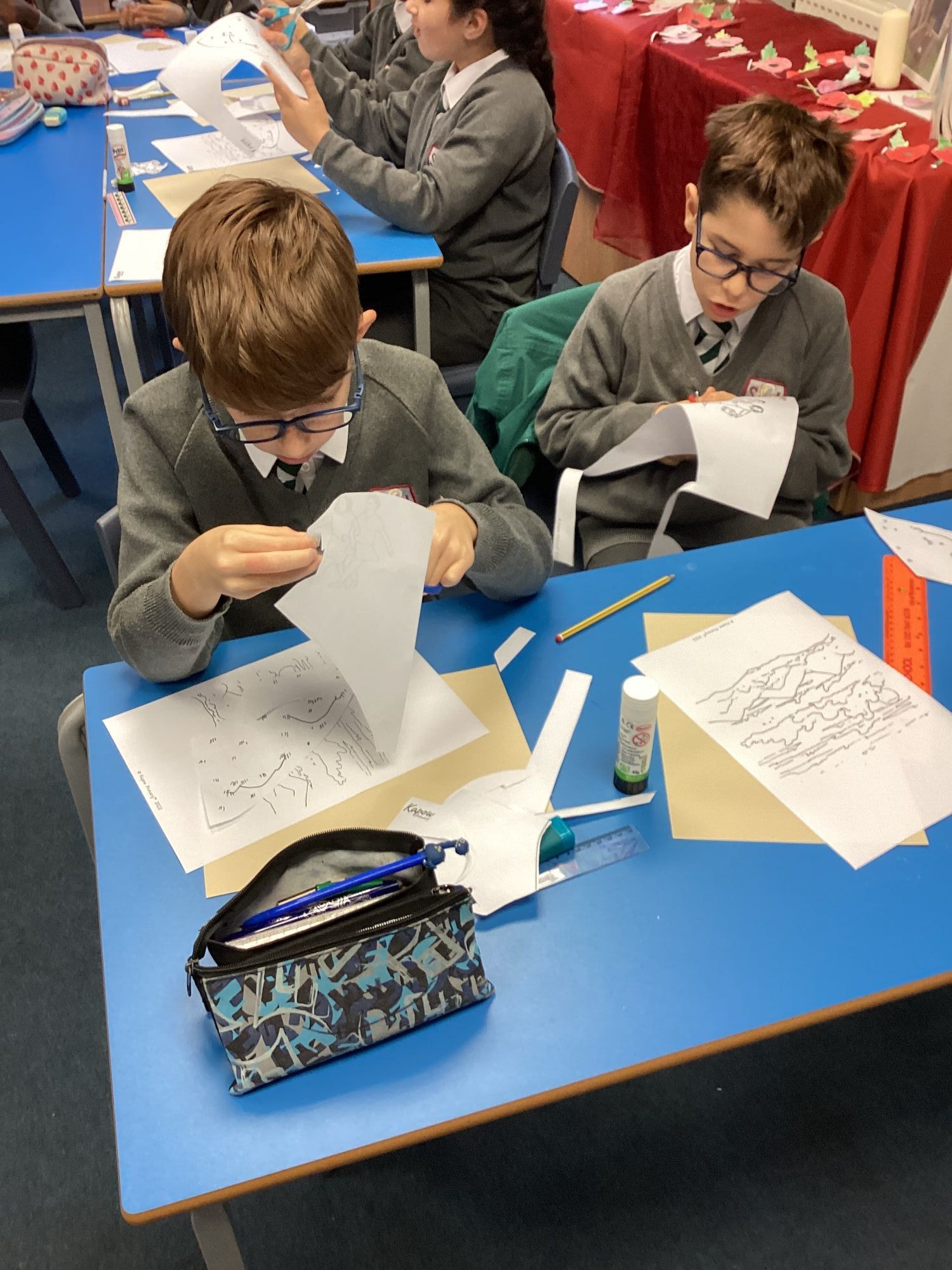
Computer Aims
Subject Content Upper Key Stage 2
By the beginning of Year 5, pupils should be able to read aloud a wider range of poetry and books written at an age-appropriate interest level with accuracy and at a reasonable speaking pace. They should be able to read most words effortlessly and to work out how to pronounce unfamiliar written words with increasing automaticity. If the pronunciation sounds unfamiliar, they should ask for help in determining both the meaning of the word and how to pronounce it correctly. They should be able to prepare readings, with appropriate intonation to show their understanding, and should be able to summarise and present a familiar story in their own words. They should be reading widely and frequently, outside as well as in school, for pleasure and information. They should be able to read silently, and then discuss what they have read.
Pupils should be able to write down their ideas quickly. Their grammar and punctuation should be broadly accurate. Pupils’ spelling of most words taught so far should be accurate and they should be able to spell words that they have not yet been taught by using what they have learnt about how spelling works in English.
During Years 5 and 6, teachers should continue to emphasise pupils’ enjoyment and understanding of language, especially vocabulary, to support their reading and writing. Pupils’ knowledge of language, gained from stories, plays, poetry, non-fiction and textbooks, will support their increasing fluency as readers, their facility as writers, and their comprehension. As in Years 3 and 4, pupils should be taught to enhance the effectiveness of their writing as well as their competence.
It is essential that pupils whose decoding skills are poor are taught through a rigorous and systematic phonics programme so that they catch up rapidly with their peers in terms of their decoding and spelling. However, as far as possible, these pupils should follow the Year 5 and 6 programme of study in terms of listening to books and other writing that they have not come across before, hearing and learning new vocabulary and grammatical structures, and having a chance to talk about all of these.
By the end of Year 6, pupils’ reading and writing should be sufficiently fluent and effortless for them to manage the general demands of the curriculum in Year 7, across subjects and not just in English, but there will continue to be a need for pupils to learn subject-specific vocabulary. They should be able to reflect their understanding of the audience for and purpose of their writing by selecting appropriate vocabulary and grammar. Teachers should prepare pupils for secondary education by ensuring that they can consciously control the structure of sentences in their writing and understand why sentences are constructed as they are. This involves consolidation, practice and discussion of language.
Specific requirements for pupils to discuss what they are learning and to develop their wider skills in spoken language form part of this programme of study. In Years 5 and 6, pupils’ confidence, enjoyment and mastery of language should be extended through public speaking, performance and debate.
Design and Technology Aims
The National Curriculum for design and technology aims to ensure that all pupils understand food and nutrition and have opportunities to learn to cook. In meeting this aim schools without access to a teaching kitchen, nearby kitchen or mobile kitchen may have to adapt what they teach accordingly to the facilities available.
It also aims to ensure that, working in fields such as materials (including textiles), horticulture, electricals and electronics, construction, and mechanics, they:
- develop valuable practical skills and use these safely with a range of resistant and non- resistant materials, drawing media, tools and equipment, in both 2-D and 3-D design and make well-crafted products that are fit for purpose
- develop and use a range of common practical skills, in contexts such as mechanical, diagnostic and repair tasks
- understand and, where appropriate, use the design cycle of planning, developing prototypes, modifying, making and evaluating
- know about good design, everyday products and use correct technical terminology
- investigate the rich history of design and technological innovation in Britain and further afield, from the Industrial Revolution onwards, as well as current innovations.
Subject Content Key Stage 2
Pupils should develop their skills and the safe use of tools and equipment by undertaking a range of practical tasks, such as making products, maintenance or cooking. They should increase their experience in different areas of design and technology, including through learning about local crafts or industries. They should understand how to use constructive feedback to improve what they design and make. Pupils should be taught about key historical developments in design and technology. Pupils should be taught about the major components of a balanced diet and how ingredients can be combined to prepare healthy meals. They should be taught basic cooking techniques and how to cook a variety of savoury dishes. In meeting these requirements, schools without access to a teaching kitchen, nearby kitchen or mobile kitchen may have to adapt the dishes and techniques they teach accordingly to the facilities available.
Through working in fields selected from those listed in the introduction materials (including textiles), horticulture, electricals and electronics, construction, and mechanics), pupils should be taught to:
- use safely and increasingly effectively a wider range of tools, equipment and materials with increasing skill to make products that are fit for purpose
- develop and use straightforward practical, maintenance and repair skills
- extend their skills to communicate their ideas visually in 2-D and 3-D, including through using information and communication technology
- use constructive comments from others to improve their work
- understand key events and turning points in design and technology, such as the Industrial Revolution, and how they have shaped the world we live in.
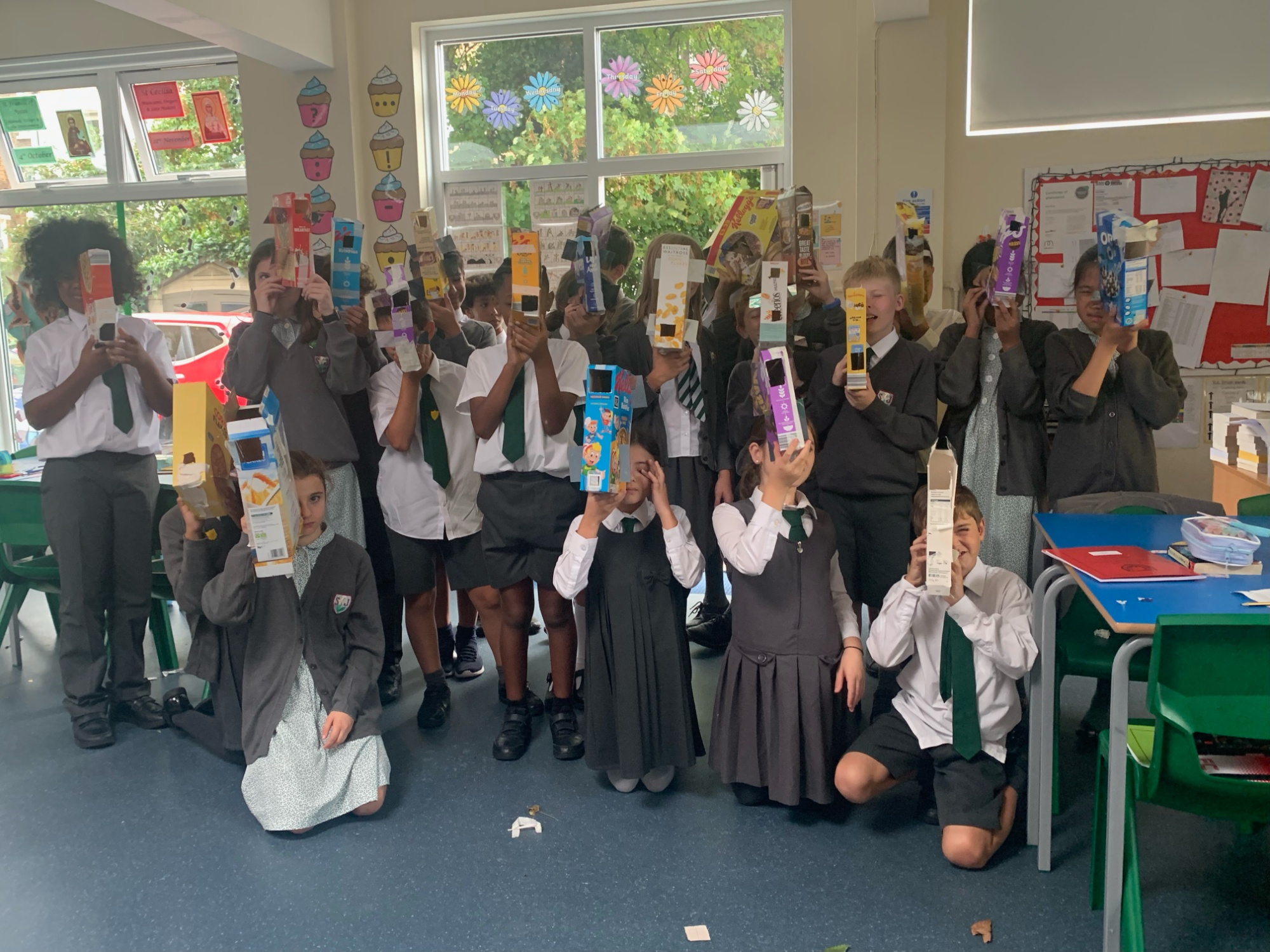
English Aims
By the beginning of Year 5, pupils should be able to read aloud a wider range of poetry and books written at an age-appropriate interest level with accuracy and at a reasonable speaking pace. They should be able to read most words effortlessly and to work out how to pronounce unfamiliar written words with increasing automaticity. If the pronunciation sounds unfamiliar, they should ask for help in determining both the meaning of the word and how to pronounce it correctly. They should be able to prepare readings, with appropriate intonation to show their understanding, and should be able to summarise and present a familiar story in their own words. They should be reading widely and frequently, outside as well as in school, for pleasure and information. They should be able to read silently, and then discuss what they have read.
Pupils should be able to write down their ideas quickly. Their grammar and punctuation should be broadly accurate. Pupils’ spelling of most words taught so far should be accurate and they should be able to spell words that they have not yet been taught by using what they have learnt about how spelling works in English.
During Years 5 and 6, teachers should continue to emphasise pupils’ enjoyment and understanding of language, especially vocabulary, to support their reading and writing. Pupils’ knowledge of language, gained from stories, plays, poetry, non-fiction and textbooks, will support their increasing fluency as readers, their facility as writers, and their comprehension. As in Years 3 and 4, pupils should be taught to enhance the effectiveness of their writing as well as their competence.
It is essential that pupils whose decoding skills are poor are taught through a rigorous and systematic phonics programme so that they catch up rapidly with their peers in terms of their decoding and spelling. However, as far as possible, these pupils should follow the Year 5 and 6 programme of study in terms of listening to books and other writing that they have not come across before, hearing and learning new vocabulary and grammatical structures, and having a chance to talk about all of these.
By the end of Year 6, pupils’ reading and writing should be sufficiently fluent and effortless for them to manage the general demands of the curriculum in Year 7, across subjects and not just in English, but there will continue to be a need for pupils to learn subject-specific vocabulary. They should be able to reflect their understanding of the audience for and purpose of their writing by selecting appropriate vocabulary and grammar. Teachers should prepare pupils for secondary education by ensuring that they can consciously control the structure of sentences in their writing and understand why sentences are constructed as they are. This involves consolidation, practice and discussion of language.
Specific requirements for pupils to discuss what they are learning and to develop their wider skills in spoken language form part of this programme of study. In Years 5 and 6, pupils’ confidence, enjoyment and mastery of language should be extended through public speaking, performance and debate.
Geography Aims
The National Curriculum for geography aims to ensure that all pupils:
- develop knowledge of the location of places of global significance, their defining physical and human characteristics and how they relate to one another; this place knowledge should provide a sound context for understanding geographical processes
- understand the processes that give rise to key physical and human geographical features of the world, how these are interdependent and how they bring about spatial variation and change over time
are competent in the geographical skills needed to:
- collect, analyse and communicate with a range of data gathered through experiences of fieldwork that deepen their understanding of geographical processes
- interpret a range of sources of geographical information, including maps, globes, aerial photographs and Geographical Information Systems (GIS)
- communicate geographical information in a variety of ways, including through maps and writing at length.
Subject Content Key Stage 2
Pupils should extend their knowledge and understanding beyond the local area and the United Kingdom to include Europe, North and South America. This will include the location and characteristics of a range of the world’s most significant human and physical features. They should develop their use of geographical tools and skills to enhance their locational and place knowledge.
Pupils should be taught to:
- locate the world’s countries, using maps to focus on Europe and North and South America and concentrating on their environmental regions, key physical and human characteristics, countries, and major cities
- name and locate counties and cities of the United Kingdom, geographical regions and their identifying human and physical characteristics, including hills, mountains, cities, rivers, key topographical features and land-use patterns; and understand how some of these aspects have changed over time
- identify the position and significance of latitude, longitude, Equator, Northern Hemisphere, Southern Hemisphere, the Tropics of Cancer and Capricorn, Arctic and Antarctic Circle, and time zones (including day and night)
- understand geographical similarities and differences through the study of human and physical geography of a region or area of the United Kingdom (different from that taught at Key Stage 1), a region or area in a European country, and a region or area within North or South America.
describe and understand key aspects of:
- physical geography, including: climate zones, biomes and vegetation belts,
- rivers, mountains, volcanoes and earthquakes, and the water cycle
- human geography, including: settlements, land use, economic activity including trade links, and the distribution of natural resources including energy, food, minerals, and water supplies
- use maps, atlases, globes and digital/computer mapping to locate countries and describe features studied
- use the eight points of a compass, four-figure grid references, symbols and key (including the use of Ordnance Survey maps) to build their knowledge of the United Kingdom and the wider world
- use fieldwork to observe, measure and record the human and physical features in the local area using a range of methods, including sketch maps, plans and graphs, and digital technologies.
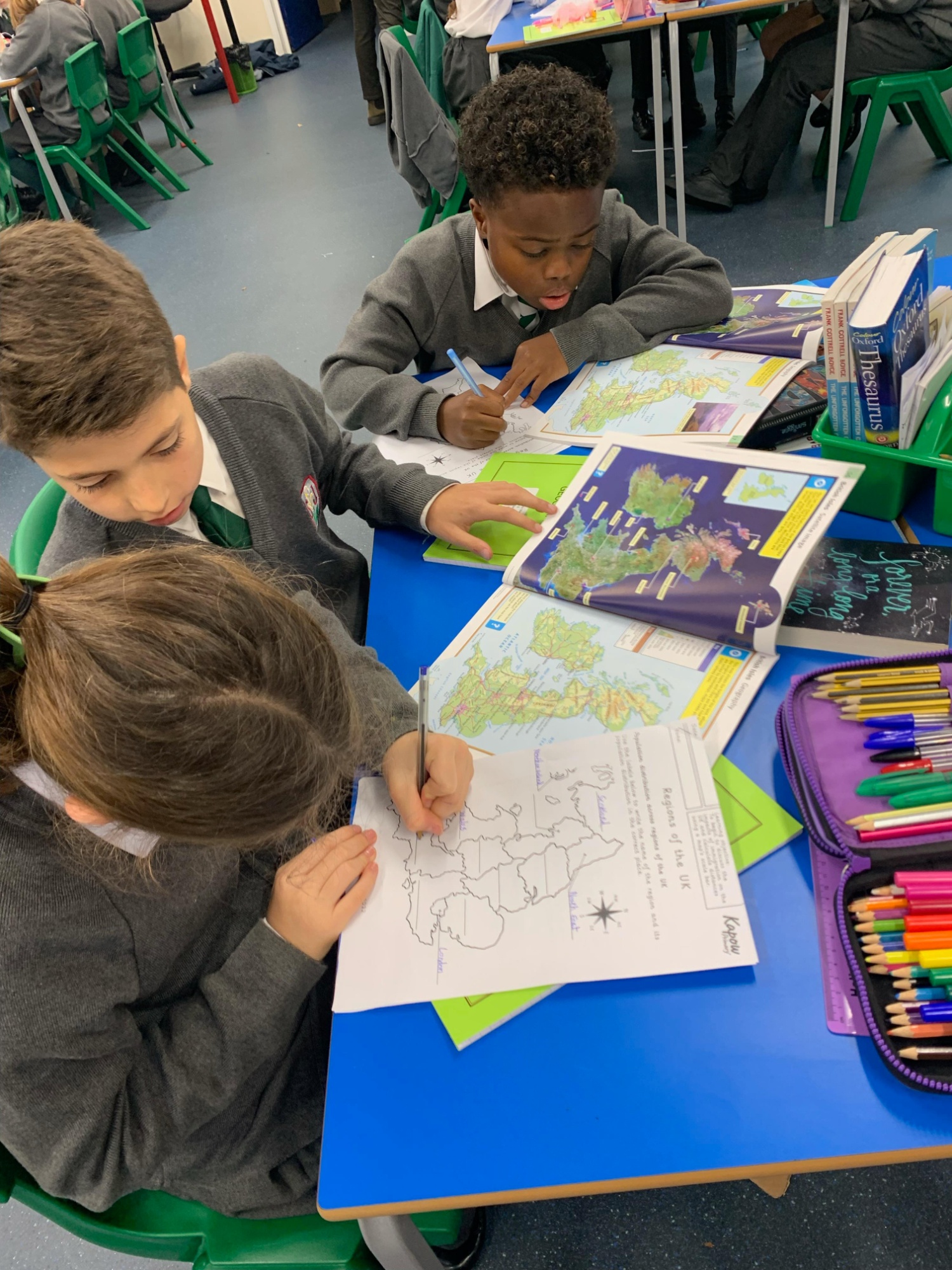
History Aims
The National Curriculum for history aims to ensure that all pupils:
- know and understand the story of these islands: how the British people shaped this nation and how Britain influenced the world
- know and understand British history as a coherent, chronological narrative, from the story of the first settlers in these islands to the development of the institutions which govern our lives today
- know and understand the broad outlines of European and world history: the growth and decline of ancient civilisations; the expansion and dissolution of empires; the achievements and follies of mankind
- gain and deploy a historically-grounded understanding of abstract terms such as ‘empire’, ‘civilisation’, ‘parliament’ and ‘peasantry’
- understand historical concepts such as continuity and change, cause and consequence, similarity, difference and significance, and use them to make connections, draw contrasts, analyse trends, frame historically-valid questions and create their own structured accounts, including written narratives and analyses
- understand how evidence is used rigorously to make historical claims, and discern how and why contrasting arguments and interpretations of the past have been constructed
- gain historical perspective by placing their growing knowledge into different contexts, understanding the connections between local, regional, national and international history; between cultural, economic, military, political, religious and social history; and between short- and long-term timescales.
Subject Content Key Stage 2
Pupils should be taught about the ancient civilisations of Greece and Rome. In addition, across Key Stages 2 and 3, pupils should be taught the essential chronology of Britain’s history. This will serve as an essential frame of reference for more in-depth study. Pupils should be made aware that history takes many forms, including cultural, economic, military, political, religious and social history. Pupils should be taught about key dates, events and significant individuals. They should also be given the opportunity to study local history.
Pupils should be taught the following chronology of British history sequentially:
early Britons and settlers, including:
- the Stone, Bronze and Iron Ages
- Celtic culture and patterns of settlement
Roman conquest and rule, including:
- Caesar, Augustus, and Claudius
- Britain as part of the Roman Empire
- the decline and fall of the Western Roman Empire
Anglo-Saxon and Viking settlement, including:
- the Heptarchy
- the spread of Christianity
- key developments in the reigns of Alfred, Athelstan, Cnut and Edward the o Confessor
the Norman Conquest and Norman rule, including:
- the Domesday Book
- feudalism
- Norman culture
- the Crusades
Plantagenet rule in the 12th and 13th centuries, including:
- key developments in the reign of Henry II, including the murder of Thomas Becket
- Magna Carta
- de Montfort's Parliament
relations between England, Wales, Scotland and France, including:
- William Wallace
- Robert the Bruce
- Llywelyn and Dafydd ap Gruffydd
- the Hundred Years War
life in 14th-century England, including:
- chivalry
- the Black Death
- the Peasants’ Revolt
the later Middle Ages and the early modern period, including:
- Chaucer and the revival of learning
- Wycliffe’s Bible
- Caxton and the introduction of the printing press the Wars of the o Roses
- Warwick the Kingmaker
- the Tudor period, including religious strife and Reformation in the reigns of Henry VIII, Edward VI, and Mary
Elizabeth I's reign and English expansion, including:
- colonisation of the New World o plantation of Ireland
- conflict with Spain
- the Renaissance in England, including the lives and works of individuals such as Shakespeare and Marlowe
the Stuart period, including:
- the Union of the Crowns
- King versus Parliament
- Cromwell's commonwealth, the Levellers and the Diggers the restoration of the
- monarchy
- the Great Plague and the Great Fire of London
- Samuel Pepys and the establishment of the Royal Navy
the Glorious Revolution, constitutional monarchy and the Union of the Parliaments.
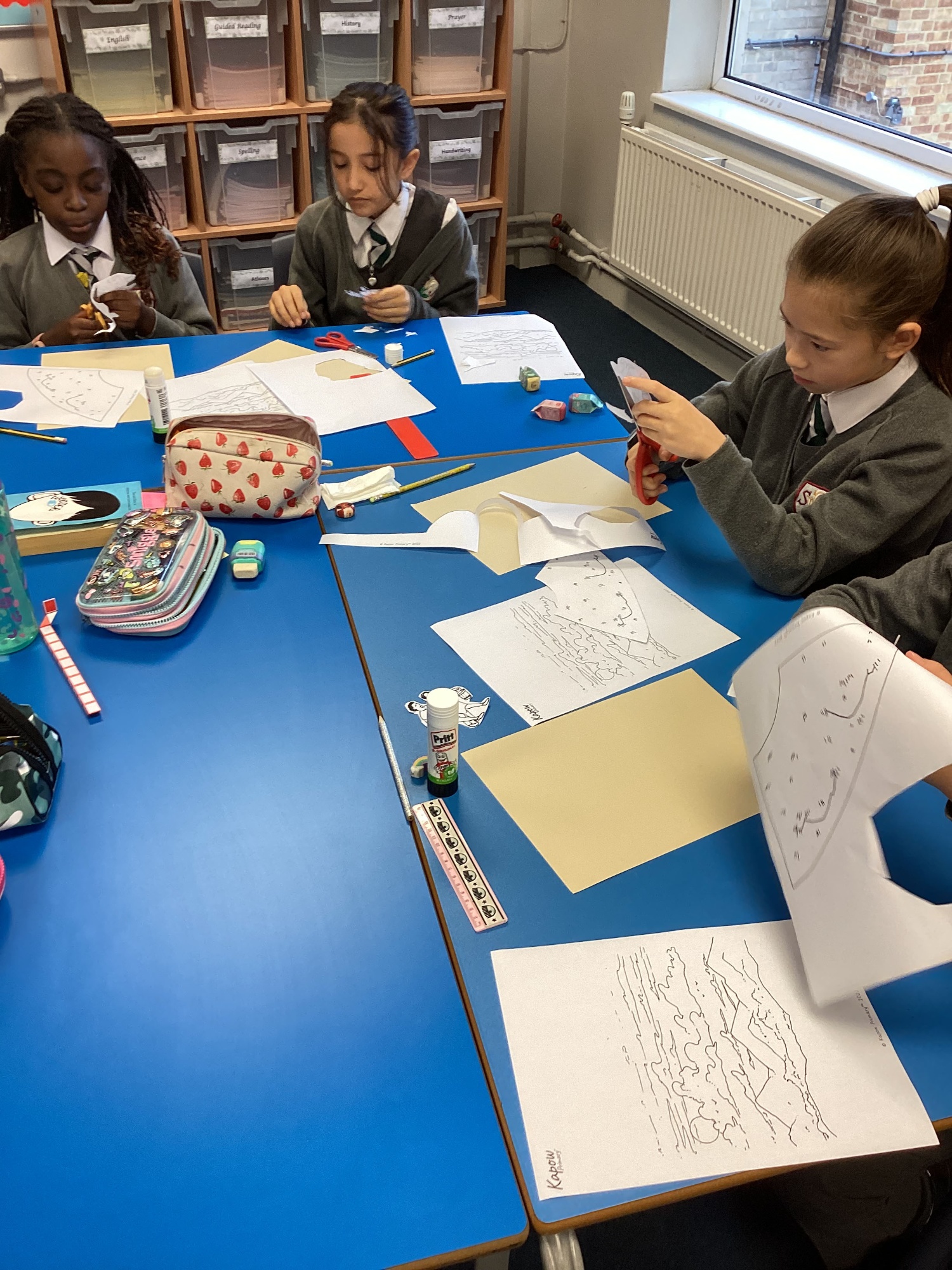
Mathematics Aims
The principal focus of mathematics teaching in upper Key Stage 2 is to ensure that pupils extend their understanding of the number system and place value to include larger integers. This should develop the connections that pupils make between multiplication and division with fractions, decimals, percentages and ratio.
At this stage, pupils should develop their ability to solve a wider range of problems, including increasingly complex properties of numbers and arithmetic, and problems demanding efficient written and mental methods of calculation. With this foundation in arithmetic, pupils are introduced to the language of algebra as a means for solving a variety of problems. Teaching in geometry and measures should consolidate and extend knowledge developed in number. Teaching should also ensure that pupils classify shapes with increasingly complex geometric properties and that they learn the vocabulary they need to describe them.
By the end of Year 6, pupils should be fluent in written methods for all four operations, including long multiplication and division, and in working with fractions, decimals and percentages.
Pupils should read, spell and pronounce mathematical vocabulary correctly.
Language Aims
The National Curriculum for languages aims to ensure that all pupils:
- understand and respond to spoken and written language from a variety of authentic sources
- speak with increasing confidence, fluency and spontaneity, finding ways of communicating what they want to say, including through discussion and asking questions, and continually improving the accuracy of their pronunciation and intonation
- can write at varying length, for different purposes and audiences, using the variety of grammatical structures that they have learnt
- discover and develop an appreciation of a range of writing in the language studied.
Subject Content Key Stage 2: Foreign languages
Teaching should focus on enabling pupils to make substantial progress in one of the following languages: French, German, Italian, Mandarin, Spanish, Latin or Ancient Greek. The teaching should provide an appropriate balance of spoken and written language and should lay the foundations for further foreign language teaching at Key Stage 3. It should enable pupils to understand and communicate ideas, facts and feelings in speech and writing, focused on familiar and routine matters, using their knowledge of phonology, grammatical structures and vocabulary. The focus of study in modern languages will be on practical communication, while the focus in Latin or Ancient Greek will be to provide a linguistic foundation for learning modern languages and for reading comprehension. Pupils studying ancient languages may take part in simple oral exchanges, while discussion of what they read will be conducted in English.
Pupils should be taught to:
- listen attentively to spoken language and show understanding by joining in and responding
- explore the patterns and sounds of language through songs and rhymes and link the spelling, sound and meaning of words
- engage in conversations; ask and answer questions; express opinions and respond to those of others; seek clarification and help
- speak in sentences, using familiar vocabulary, phrases and basic language structures
- develop accurate pronunciation and intonation so that others understand when they are reading aloud or using familiar words and phrases
- present ideas and information orally to a range of audiences
- read carefully and show understanding of words, phrases and simple writing
- appreciate stories, songs, poems and rhymes in the language
- broaden their vocabulary and develop their ability to understand new words that are introduced into familiar written material, including through using a dictionary
- write phrases from memory, and adapt these to create new sentences, to express ideas clearly
- describe people, places, things and actions orally and in writing
- understand basic grammar appropriate to the language being studied, such as (where relevant): feminine, masculine and neuter forms and the conjugation of high-frequency verbs; key features and patterns of the language; how to apply these, for instance, to build sentences; and how these differ from or are similar to English.
Music Aims
The National Curriculum for music aims to ensure that all pupils:
- perform, listen to, review and evaluate music across a range of historical periods, genres, styles and traditions, including the works of great musicians and composers
- learn to sing and to use their voices, to compose and make music with others, have the opportunity to learn a musical instrument, and have the opportunity to progress to the next level of musical excellence
- understand musical notations and how music is constructed, produced and communicated through its inter-related dimensions: pitch, duration, dynamics, tempo, timbre, texture and structure.
Subject Content Key Stage 2
Pupils should be taught to sing and play musically with increasing confidence and control. They should develop an understanding of musical composition, organising and manipulating ideas within musical structures and reproducing sounds as part of an aural memory.
Pupils should be taught to:
- play and perform in solo and ensemble contexts, using their voice and playing musical instruments with increasing accuracy, control and expression
- improvise and compose music using the inter-related dimensions of music separately and in combination
- listen with attention to detail and recall sounds with increasing aural memory
- use and understand the basics of staff and other musical notations
- appreciate and understand a wide range of high-quality live and recorded music from
- different traditions and from great musicians and composers
- develop an understanding of the history of music.
Physical Education Aims
The National Curriculum for physical education aims to ensure that all pupils:
- develop competence to excel in a broad range of physical activities
- are physically active for sustained periods of time
- engage in competitive sports and activities
- lead healthy, active lives.
Subject Content Key Stage 2
Pupils should continue to implement and develop a broader range of skills, learning how to use them in different ways and to link them to make actions and sequences of movement. They should enjoy communicating, collaborating and competing with each other. They should develop an understanding of how to succeed in different activities and sports and learn how to evaluate and recognise their own success.
Pupils should be taught to:
- use running, jumping, catching and throwing in isolation and in combination
- play competitive games, modified where appropriate, such as football, netball, rounders, cricket, hockey, basketball, badminton and tennis, and apply basic principles suitable for attacking and defending
- develop flexibility, strength, technique, control and balance, for example through gymnastics and athletics
- perform dances using a range of movement patterns
- take part in outdoor and adventurous activity challenges both individually and within a team
- compare their performances with previous ones to achieve their personal best.
Science Aims
Subject Content Upper Key Stage 2
The principal focus of science teaching in upper Key Stage 2 is to enable pupils to develop a deeper understanding of a wide range of scientific ideas. They should do this through exploring and talking about their ideas; asking their own questions about scientific phenomena; and analysing functions, relationships and interactions more systematically. At upper Key Stage 2, they should encounter more abstract ideas and begin to recognise how these ideas help them to understand and predict how the world operates. They should also begin to recognise that scientific ideas change and develop over time. They should select the most appropriate ways to answer science questions using different types of scientific enquiry, including observing changes over different periods of time, noticing patterns, grouping and classifying things, carrying out fair tests and finding things out using a wide range of secondary sources of information. Pupils should draw conclusions based on their data and observations, use evidence to justify their ideas, and use their scientific knowledge and understanding to explain their findings.
‘Working and thinking scientifically’ is described separately at the beginning of the programme of
study, but must always be taught through and clearly related to substantive science content in the programme of study. Throughout the notes and guidance, examples show how scientific methods and skills might be linked to specific elements of the content.
Pupils should read, spell and pronounce scientific vocabulary correctly.


